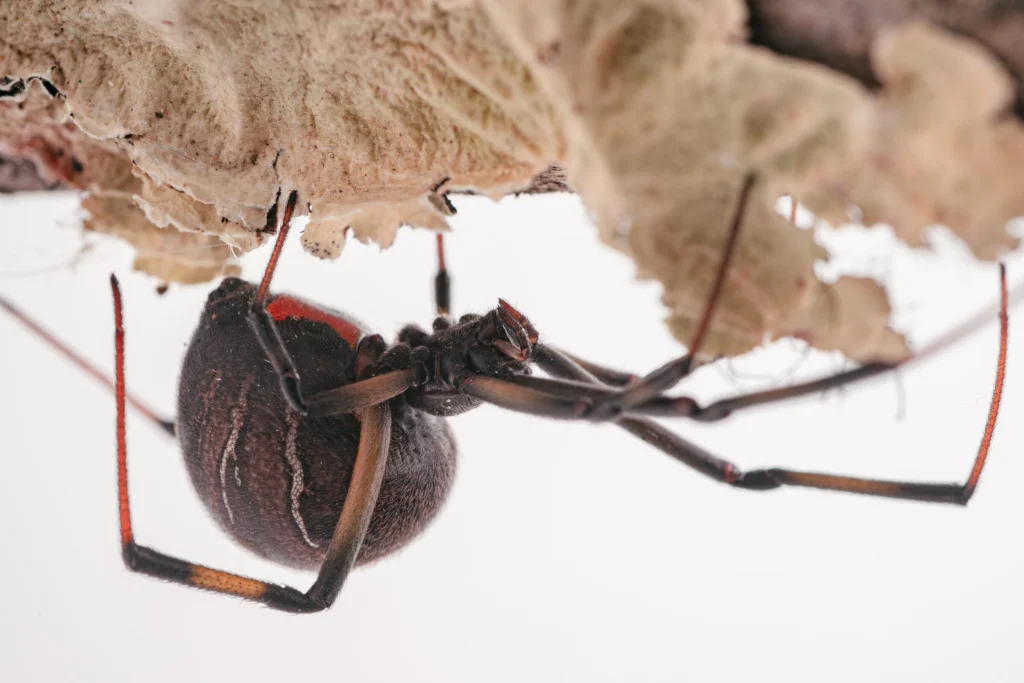The Brown Widow Spider
This is a female brown widow (Latrodectus geometricus) spider. Amber was able to capture this spider and we both believed it to be a black widow at first glance. It was dark, almost black, and had the telltale red hourglass on the abdomen.
After closer inspection, we determined it to be a brown widow due to its color and the egg sac that was nearby. This one is dark for a brown widow which is what mislead us at first. The egg sac that was nearby was spiky rather than smooth which is characteristic of a brown widow sac.

The venom of a brown widow is the same as that of the black widow. Their venom is a neurotoxin that can cause latrodectism – pain, muscle rigidity, vomiting, and sweating. They can dry bite and deliver no venom, and even most bites that do inject venom do not contain enough for more than just a localized reaction. If, however, a significant amount is injected then latrodectism follows. This could last a few days with treatment. Without treatment, some symptoms may last a few weeks.
Despite this, they are still quite docile and just want to be left alone. I was able to manipulate this one by gently urging it where I wanted with a small stick. It never showed an offensive pose and only once went on full defense – balling up and playing dead. She even began cleaning herself as seen in some of the photos.
As docile as they are, I would still advise you to leave them alone due to their bite. The most risk would come from an allergic reaction to the venom which you may not know you’ll have. If you must relocate them, urge them into a plastic container with a lid. Generally, they won’t even attempt to bite unless they are feeling a crushing pressure. This is why most bites happen on the hands and feet of people that unknowingly press against one while reaching for garden tools or putting on old shoes. Again, if you must handle them, handle with care.
